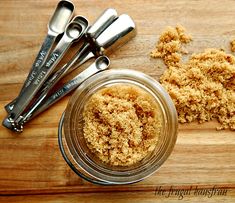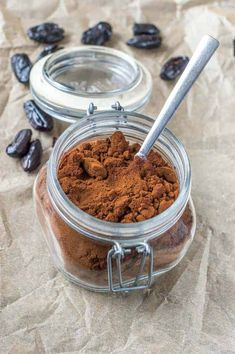Substitutes for Coconut Sugar

Sweeteners are always used in our meals and beverages. In other words, sugar is a substance that we always have on hand in our kitchen. Furthermore, coconut sugar is one of several available kinds. Compared to regular sugar, it is thought to be a healthier alternative.
It is a natural sweetener manufactured from the sap of the coconut palm. After being sliced and gathered, it is heated until all of the water has evaporated. It is then ground into granules.
Coconut sugar is frequently used in baking, sauces, and drinks as a sweetener. Is there a substitute for this product if you run out of coconut sugar or wish to use something else?
Light brown sugar, Sucanat, Maple sugar, Maple syrup, Date sugar, Stevia, Piloncillo, Raw honey, and Agave nectar are the finest Coconut Sugar replacements.
Examine the specifics of each product, how to combine them, and the ideal ratio. Also, make sure to check out our simple recipe for powdered coconut sugar.
Substitutes for Coconut Sugar
Coconut sugar is a sweetener that is often used in many Asian dishes. As previously stated, it is thought to be healthier than regular sugar.
However, if you cannot locate it or prefer another option, the following list might assist you in selecting the ideal alternative for your next meal.
1 . Light brown sugar

The first alternative is light brown sugar, which can be substituted for coconut sugar. It comprises refined white sugar with molasses, which gives the sugar a brown hue and a caramel flavor.
There is also dark brown sugar, which contains more molasses than light brown sugar. Because it has a comparable flavor, texture, and color as coconut sugar, light-colored brown sugar is thought to be more acceptable. When substituting them in cooking, use a 1:1 ratio.
2 . Sucanat
Our next option is sucanat sugar, which can be used in place of coconut sugar. It is classified as raw sugar because it is not processed like conventional sugar.
Sucanat has a rougher texture, and what distinguishes it from coconut sugar is that it dissolves more slowly. In most recipes that call for coconut sugar, use a 1:1 ratio of coconut sugar.
3. Maple sugar
Maple sugar is an alternative to coconut sugar that might be explored. It is manufactured from maple tree sap, and the only difference between it and sugar is that the syrup is decreased.
Because maple sugar and coconut sugar have similarities, they can be used interchangeably. The flavors are similar. Maple sugar features hints of butter and caramel and a vanilla aroma. In all recipes, a 1:1 ratio can be used.
4. Maple syrup
Maple syrup is a well-known and extensively used sweetener that may be used to substitute for coconut. The textural difference between the two is that maple syrup is liquid.
In addition, maple syrup contains components of caramel and vanilla, which give it a pleasant fragrance. You may use it in most recipes that call for coconut sugar, using 14 cups of maple syrup for each cup of sugar.
5. Date sugar

Date sugar is another good substitute for coconut sugar. It is produced from dried and crushed dates, not sugar crystals.
Although it is not as sweet as other forms of sugar, it can be used in place of coconut sugar. It is said to be highly nutritious, as it contains many vitamins and minerals.
Date sugar is best used in baked foods. Also, if you use it in beverages, bear in mind that it does not dissolve quickly. Use the identical amounts as called for in the recipe.
6. Stevia
Stevia is another substance that may be used in coconut sugar in recipes. Stevia is distinguished by the fact that it is derived from plant leaves.
It has no calories, making it extremely healthful. However, it is sweeter than conventional sugar because it is made from natural sugar. When substituting stevia for coconut sugar in recipes, use a 1:1 ratio.
7. Piloncillo
Piloncillo is a form of sugar commonly used in Mexican cuisine and may also be used as a substitute for coconut sugar. It is prepared with unprocessed whole cane sugar, often obtained in Mexico.
Piloncillo has a caramel flavor with earthy undertones. It is supposed to have a brown sugar flavor. You may cut it up into smaller pieces to use in dishes or beverages. Piloncillo may be used in any recipe that calls for coconut sugar and is tailored to your preferences.
8. Raw honey
Raw honey can also be used to replace coconut sugar. You may use it as a substitute in many recipes, but remember that honey is a liquid.
In comparison to pasteurized honey, raw honey has a more nuanced flavor. It’s sweet and might be a lovely addition to your food.
Use 14 of the quantity required to replace the coconut sugar. That way, you’ll preserve the recipe exactly as written, with no apparent changes.
9. Agave nectar
Agave nectar is a one-of-a-kind product that can be used in place of coconut sugar. It is sweeter and is said to be akin to honey. It is healthful and natural. Use it as a sweetener in beverages or dishes instead of coconut sugar.
How to Make Powdered Coconut Sugar

This is an essential and straightforward recipe for making powdered coconut sugar at home.
Because it’s so simple, you can do it anytime you want. Combine a cup of coconut sugar with one spoonful of easter arrowroot powder or scratch.
Put everything in a blender and mix for approximately a minute to create a sweet powdered sugar. Make the most of your recipes.
Related Issues
Can brown sugar be substituted for coconut sugar?
Yes, you can use coconut sugar in your recipes. You’ll only have to utilize a 1:1 replacement ratio. They taste identical, and the only difference is that brown sugar does not retain moisture, which may be an issue while cooking. It may cause your baked items to be a little drier than they should be.
What distinguishes coconut sugar from regular sugar?
The nutritional contents of coconut sugar differ from those of regular sugar. Coconut sugar has less glucose than table sugar. It is said to be healthy and to contain vitamins.
Can I use maple syrup for the coconut sugar?
In addition to coconut sugar, maple syrup can be used in place of it in recipes. You’ll need to replace a 1:1 ratio.











